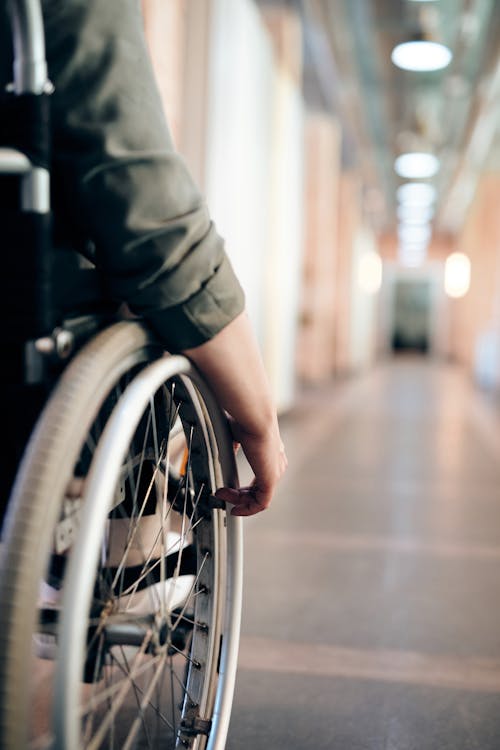Enhancing Accessibility: Key Home Modifications for Young Adults with Special Needs
In the US, more than 75% of young adults with disabilities—whether it be intellectual or physical—live under the care of their families.
Even so, people with special needs deserve a space to call their own. Creating a home environment that caters to their unique requirements ensures they live with dignity, independence, and a sense of belonging.
In this article, we’ll explore some modifications for young adults with special needs and highlight the impact these adjustments can have on safety and overall comfort.
Understanding Your Child's Space: Types of Home Modifications, Explained

As a parent, you know the needs of your child best. Determining what modifications they require depends on the specific challenges they may face in their daily lives.
Home modifications typically fall under three primary categories:
- Accessibility modifications
- Cognitive modifications
- Sensory modifications
Young adults with physical disabilities, such as those with cerebral palsy, spinal cord injuries, and musculoskeletal injuries, often require tailored modifications to facilitate ease of movement.
Thus, accessibility modifications should prioritize creating spaces that are easily navigable through ramps and widened doorways.
Meanwhile, individuals with cognitive challenges benefit from environments that are structured, safe, and conducive to their specific needs. Modifications range from simplified layouts, color-coded systems, and safety measures like corner guards and safety locks.
As for individuals with psychiatric disorders, such as bipolar disorder, conduct disorder, or obsessive-compulsive disorder, modifications go beyond physical accessibility.
It often involves installing lighting options to accommodate individual sensitivities, establishing safe spaces that they can retreat to when feeling overwhelmed, and implementing structured living spaces.
Occupational therapists offer specialized assessments to help you identify the long-term needs and challenges young adults may face in their daily lives. Collaborating with such professionals allows for a deeper understanding of their unique abilities and limitations.
Exploring Modifications for Young Adults with Special Needs
Young adults with special needs require a thoughtful and inclusive approach to creating living spaces that cater to their unique requirements.
Beyond addressing physical challenges, caretakers must consider cognitive, sensory, and emotional aspects.
Here are some key considerations when creating a space for young adults with special needs, depending on the location of the house:
Entrance and Common Areas

For young adults with mobility issues, implementing accessibility through ramps or lifts allows them to enter and move about with ease.
Clear pathways, well-lit surroundings, and comfortable seating also contribute to a more inclusive environment that accommodates diverse mobility needs.
Bedroom
Customizable lighting not only accommodates sensory preferences but also contributes to a calming sleep environment.
If space allows, adding living room-style furniture, such as a couch, coffee table, and a TV, can transform a space into a welcoming environment where individuals can engage in recreational activities at their own pace and comfort.
You may also want to consider incorporating dormitory-style items in the room, like a microwave, a mini-fridge, or a table-top washing machine so those with special needs can manage their meals and laundry within the comfort of their living space.
Bathroom
According to the Centers for Disease Control and Prevention, more than 235,000 people visit emergency rooms due to injuries suffered in the bathroom.
Over 80% of these injuries were caused by slips and falls.
Modifying bathrooms to suit the needs of young adults with special needs eliminates or at least significantly reduces this risk.
Here are some bathroom modifications to consider:
- Grab bars and support rails
- Bath lifts
- Elevated toilet seats
- Non-slip tiles
- Wheelchair-accessible showers and sinks’
- Touchless taps
Kitchen
Young adults with developmental disabilities, including those with Down syndrome or autism, often face unique challenges in the kitchen.
To ensure accessibility, you may have to introduce color-coded systems for organizing ingredients or categorizing kitchen items, as well as step-by-step instructions to assist with meal preparation.
For example, you can use color-coded labels on containers for different food groups or a simple numbering or lettering system for utensils and tools.
To help individuals with motor skill challenges, invest in utensils with ergonomic designs and adaptive tools like easy-grip can openers or one-handed cutting boards.
As for those with mobility issues, adjusting the height of countertops and opting for appliances with user-friendly interfaces are the best ways to facilitate independence in the kitchen.
Exercise of Therapy Areas
Depending on the young adult’s special needs, you may have to dedicate an area for exercise or therapeutic activities.
Standard exercise equipment can be a good option, but it might not be appropriate for all individuals. Therefore, you should invest in adaptive exercise equipment tailored to the individual's needs for safe and effective engagement in physical activities.
Here are some universal exercise items that may fit a wide range of needs:
- Therapy balls
- Resistance bands
- Yoga mats
- Weight sets
- Balance discs
- Hula hoops
- Foam bricks
Alongside dedicated exercise spaces, people with special needs may also need an area that can act as a sensory retreat.
Provide comfortable seating options such as bean bags, cushions, and soft chairs for relaxation, and opt for soft, cushioned flooring materials such as foam mats or carpets to create a comfortable and safe space.
Similarly, sensory-friendly items like weight blankets, therapeutic swings, light projectors, and aromatherapy diffusers can create a soothing and calm environment that they can retreat to when the outside world becomes a little too much to handle.
Home Security
People with special needs are especially vulnerable to security concerns, so creating a secure home environment—with spaces that are off-limits—is paramount to ensuring their well-being.
Install security locks on closets or sheds to protect them from dangerous objects or hazardous materials.
For stairways, you may want to create physical boundaries with adult-size special needs gates. You can have these gates custom-made to fit any size hallway, door opening, or stairway.
Install surveillance cameras in common areas to help you monitor the home when you’re not physically present.
Additionally, utilize smart locks with features like keyless entry and remote locking to allow people with special needs to access the home without the need for traditional keys.
Tips and Resources for Financing Home Modifications
Home modifications can be costly, but there are certain grants and resources to help offset the expenses.
Some states offer Medicaid waivers that provide funding for home modifications to support individuals with disabilities to maintain independence within their homes.
If your home is at least one year old, you can opt for Section 203(k) Rehabilitation Loans to cover the purchase or refinancing and rehabilitation of a home.
The same is said for Title I Property Improvement Loans, which are used for home improvements, repairs, and rehab.
Social Security Disability Insurance (SSDI) recipients may also be eligible for financial assistance for home modification through programs like the Social Security Administration's Ticket to Work.
Conclusion
People with special needs deserve homes that foster independence, support their unique requirements, and prioritize their well-being.
The home modifications mentioned in this post are among the many strategies available to create environments that enhance the overall quality of life of these young adults.
For a more comprehensive approach to home modification, it’s worth reaching out to a professional to provide personalized assessments based on the specific needs of the individual.





